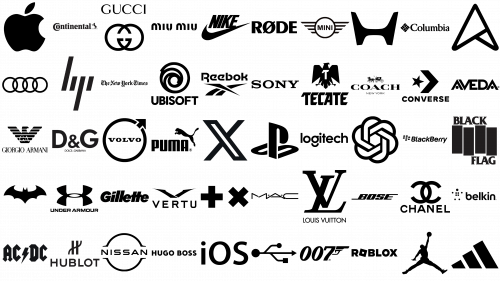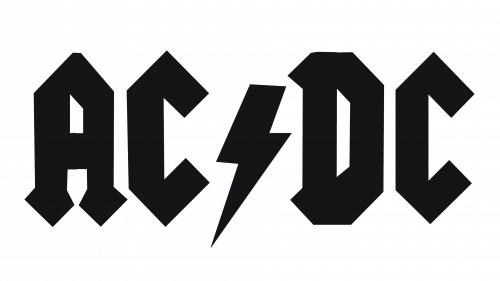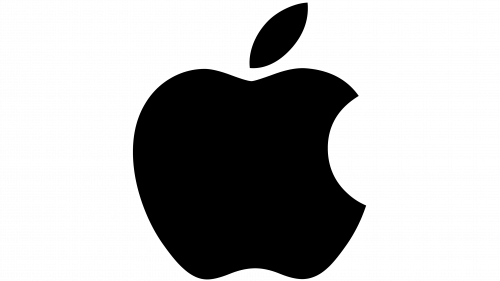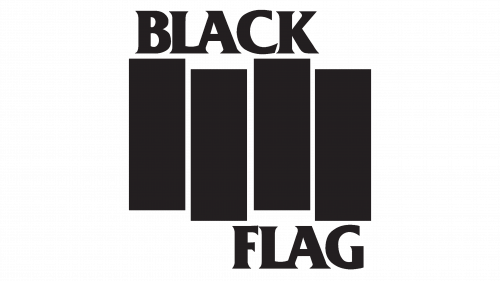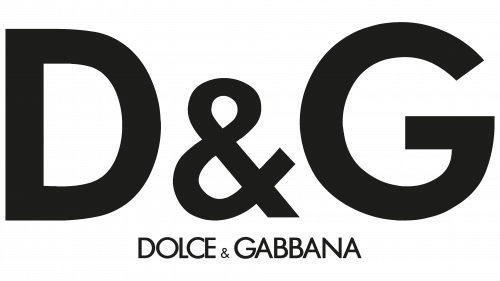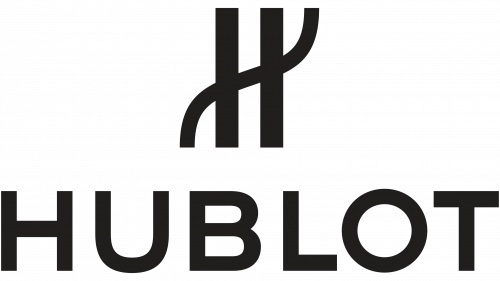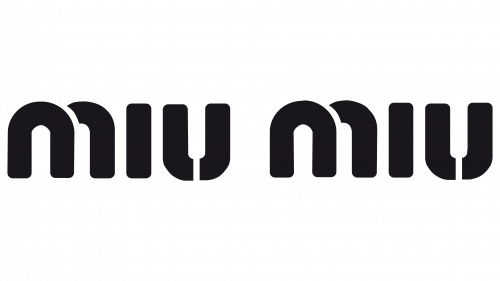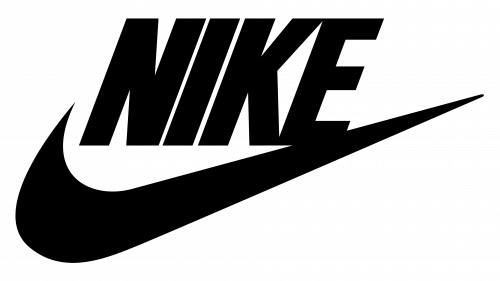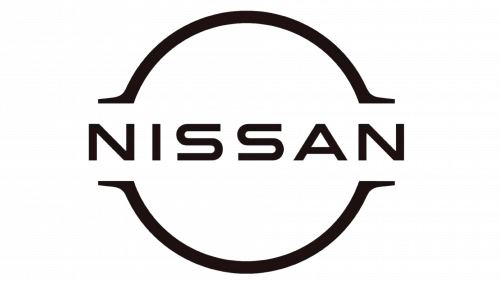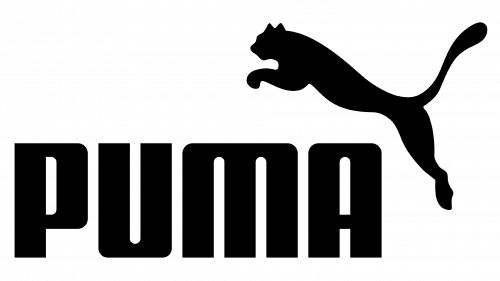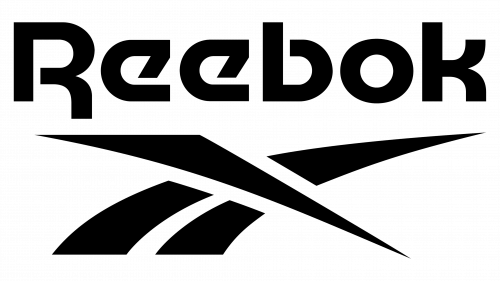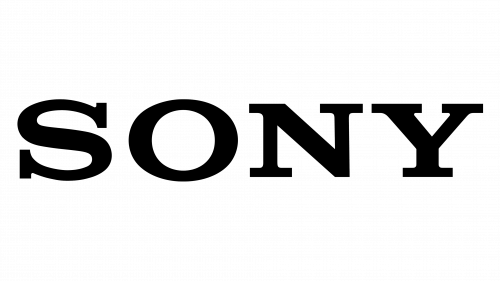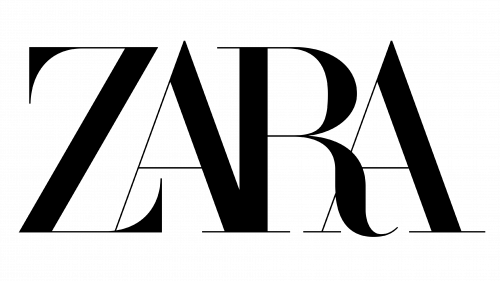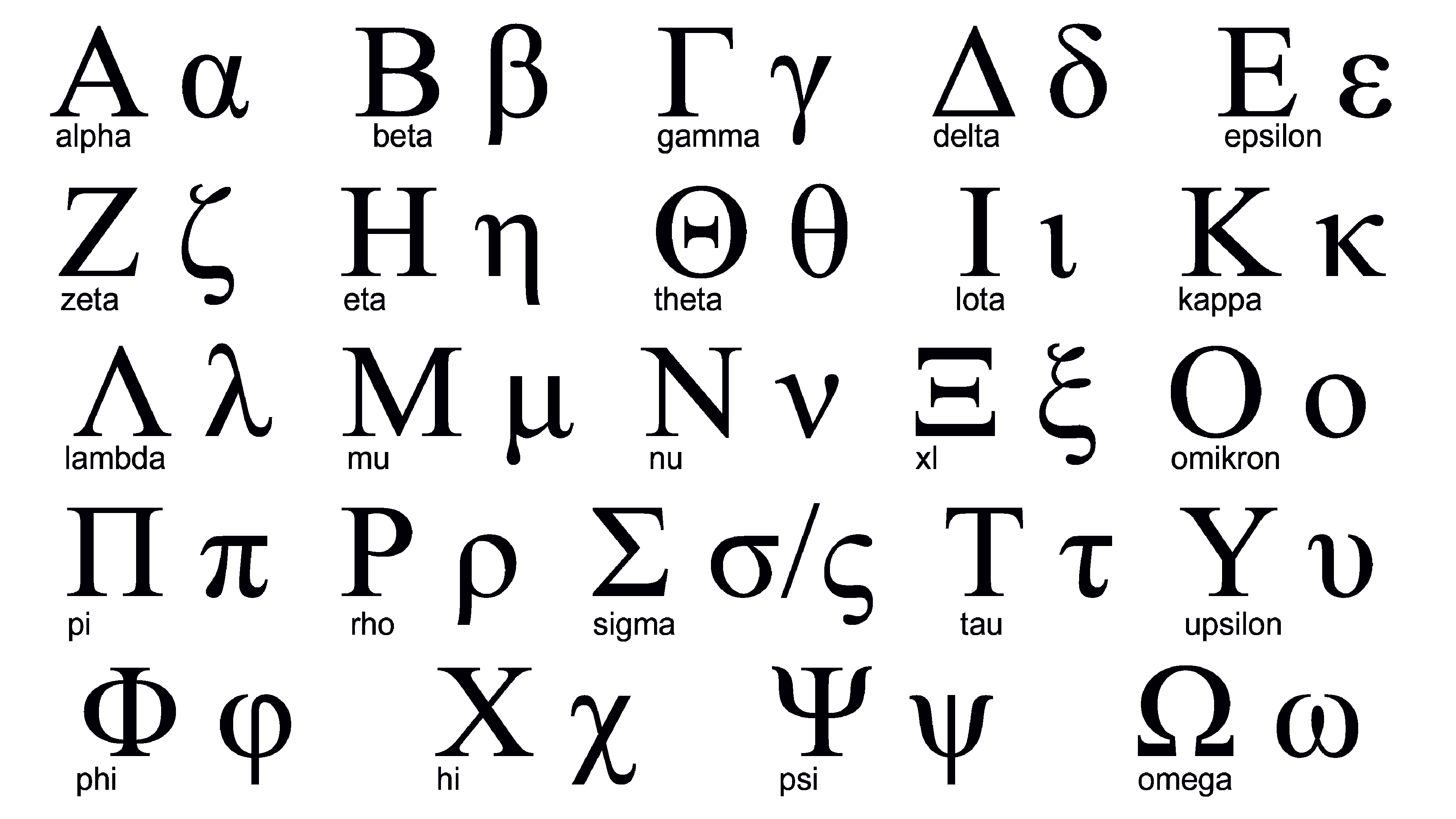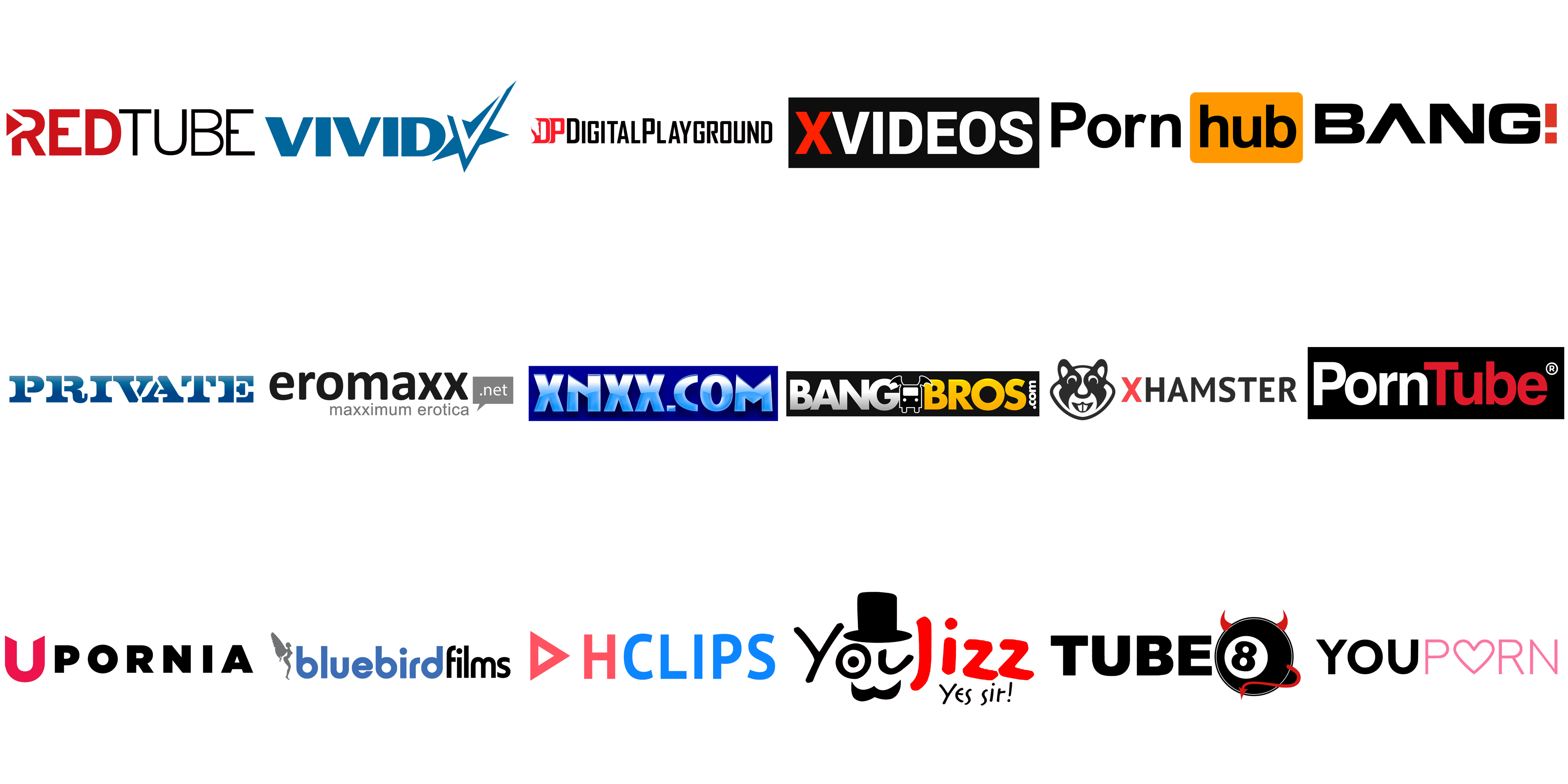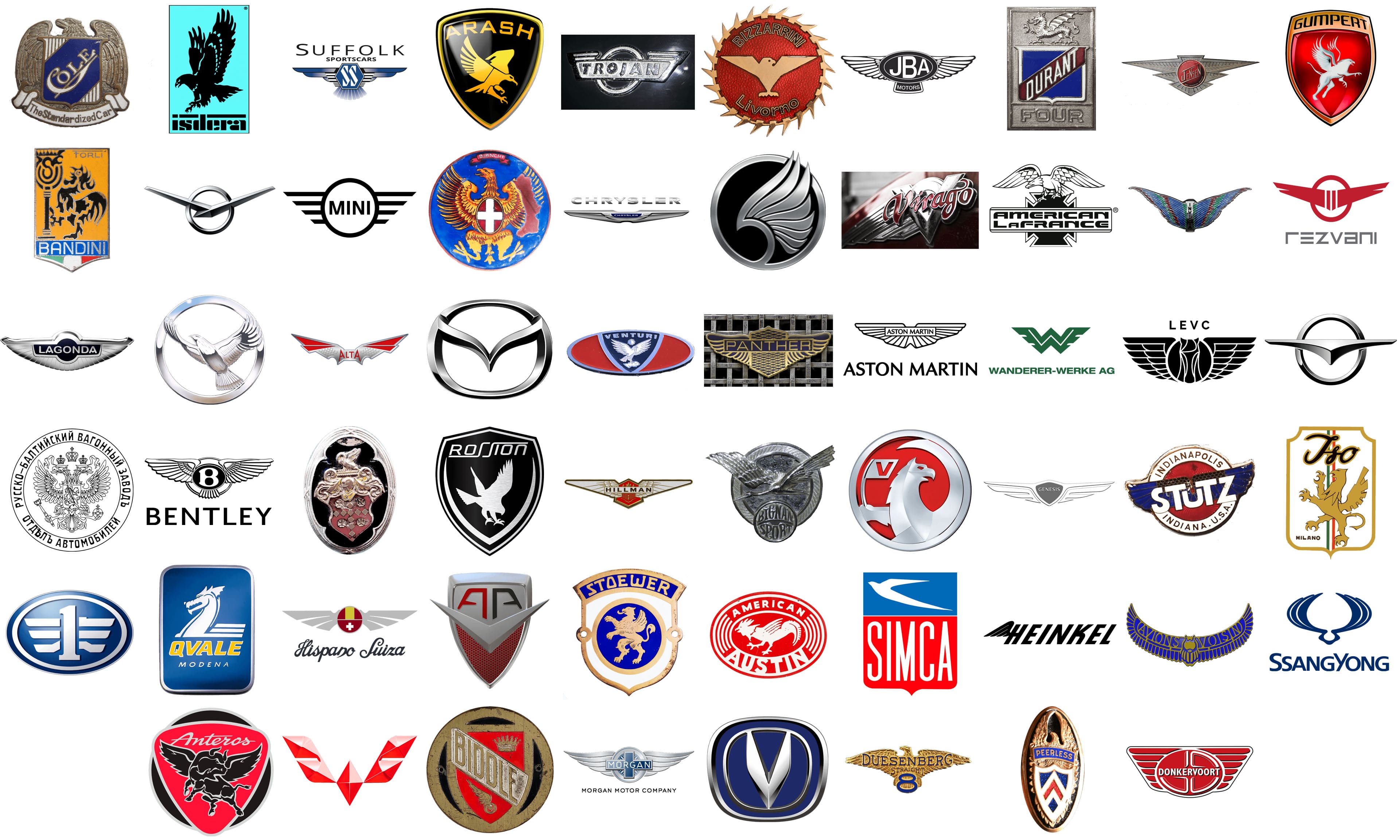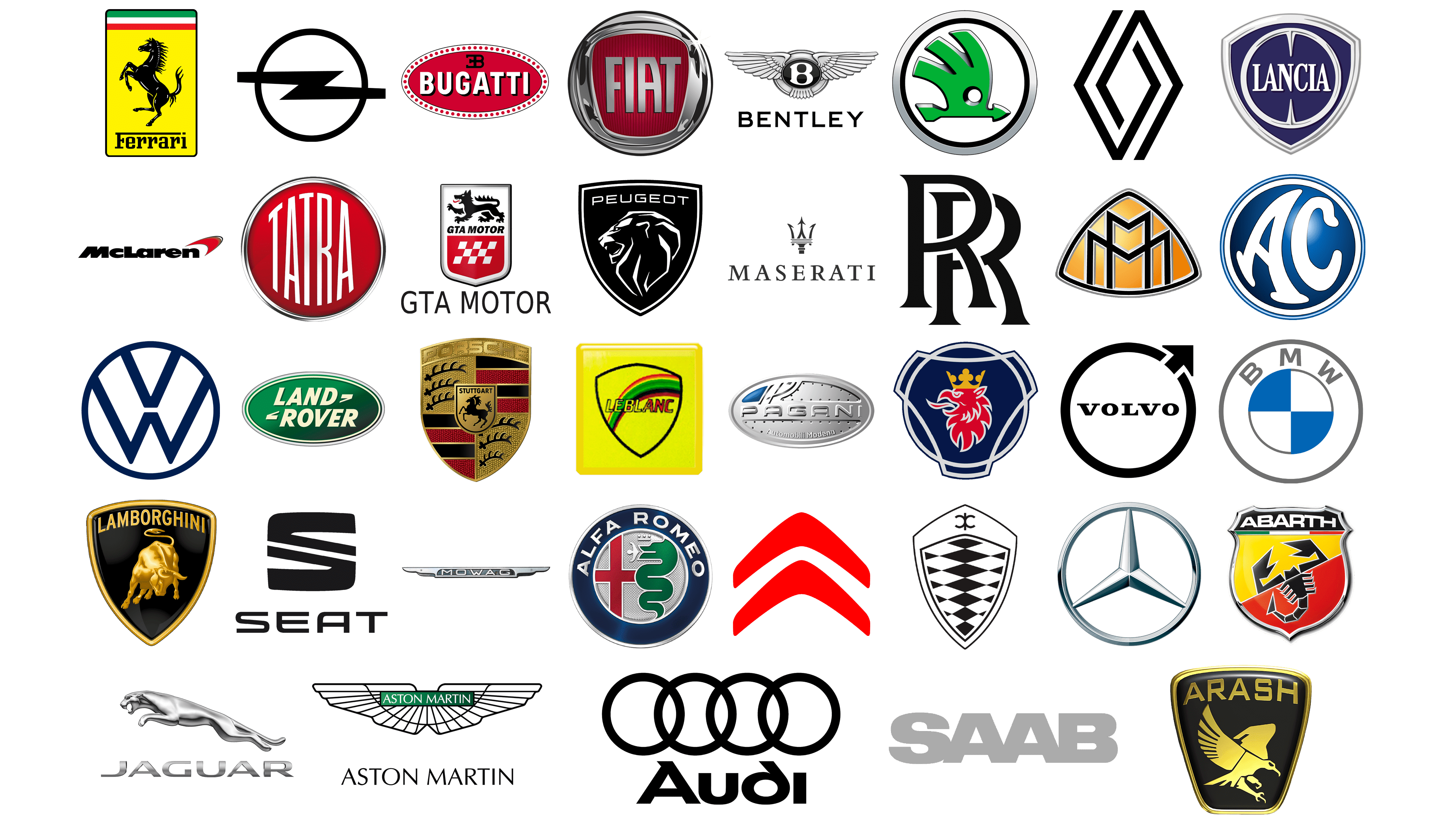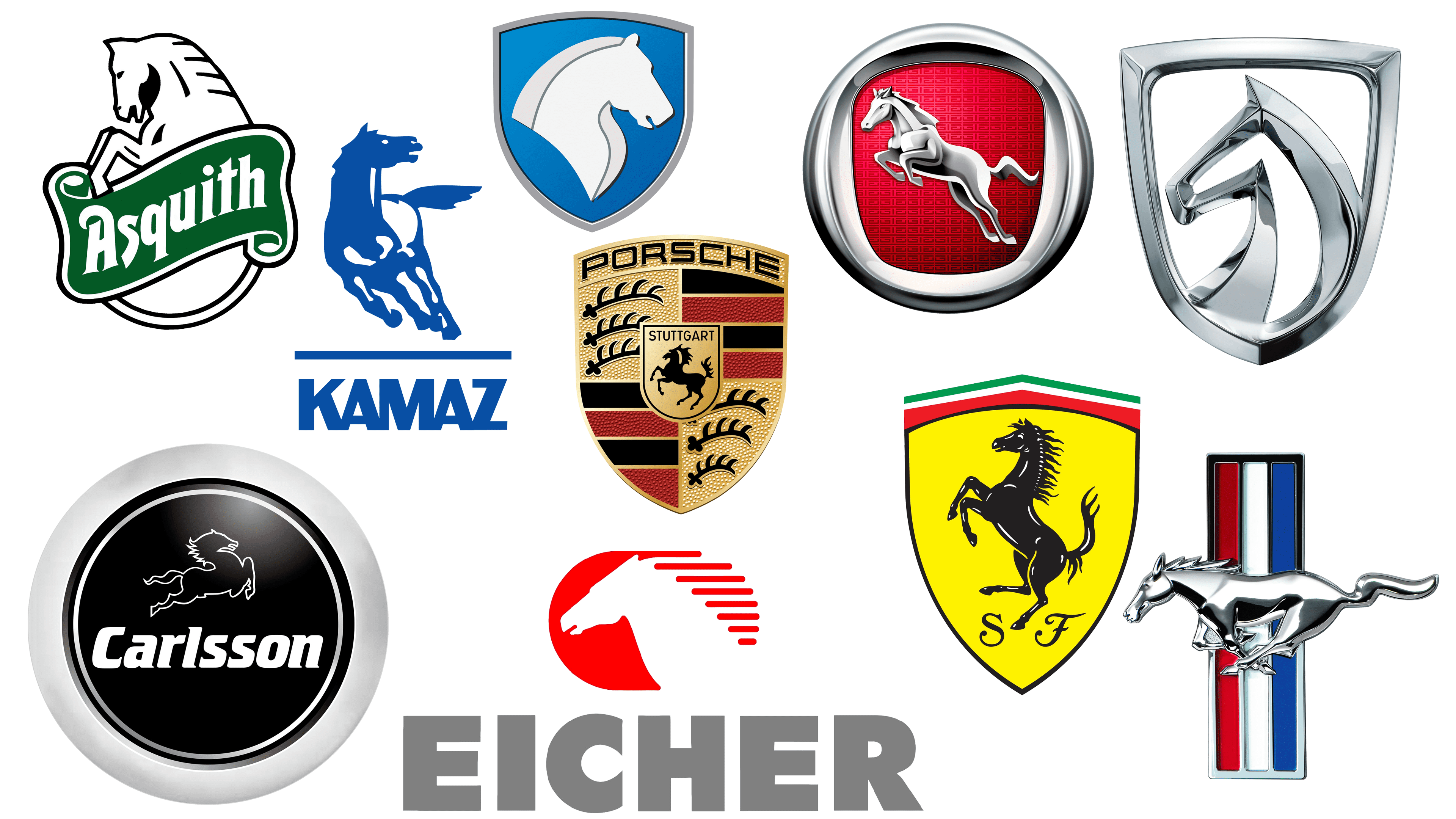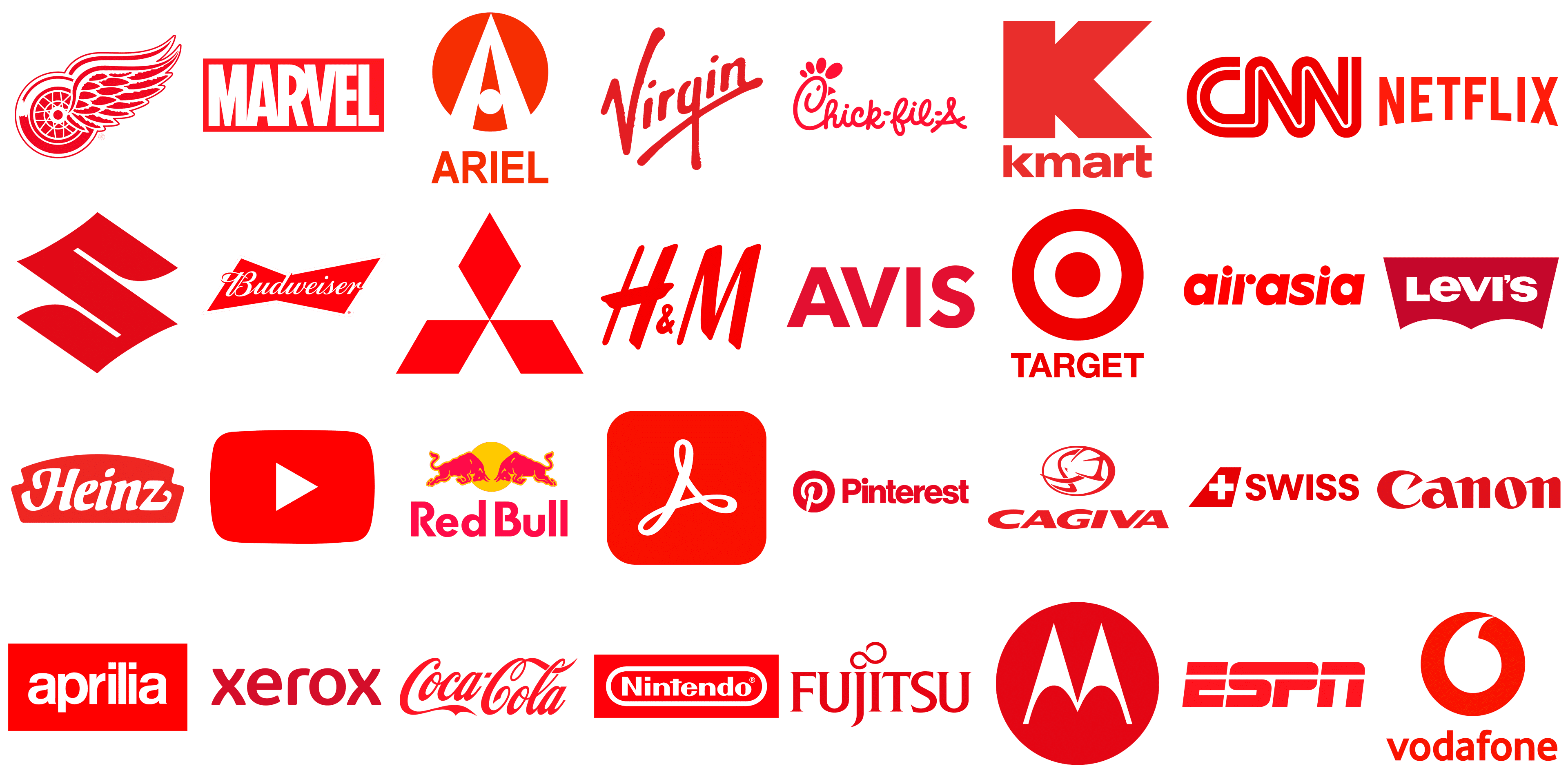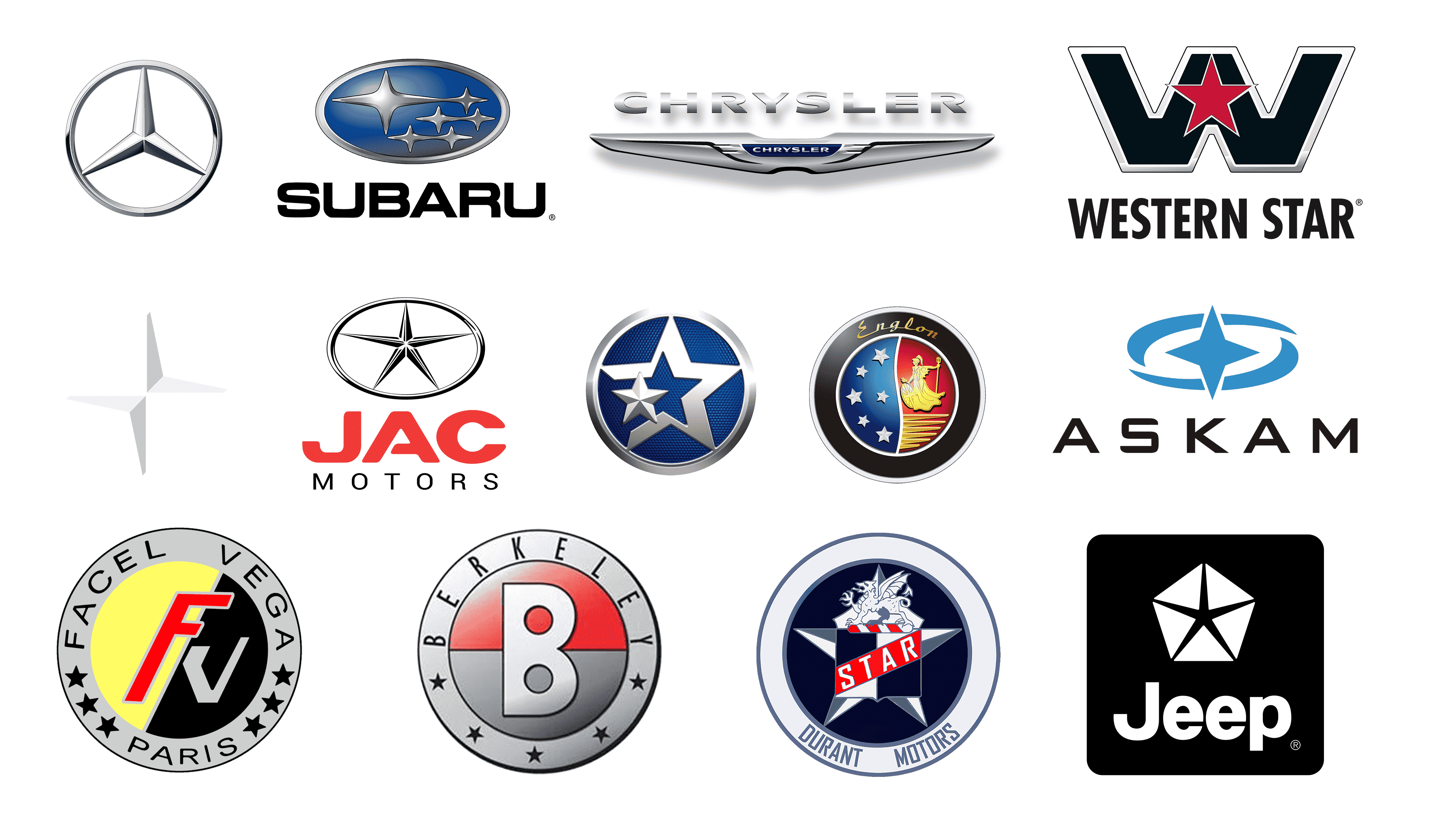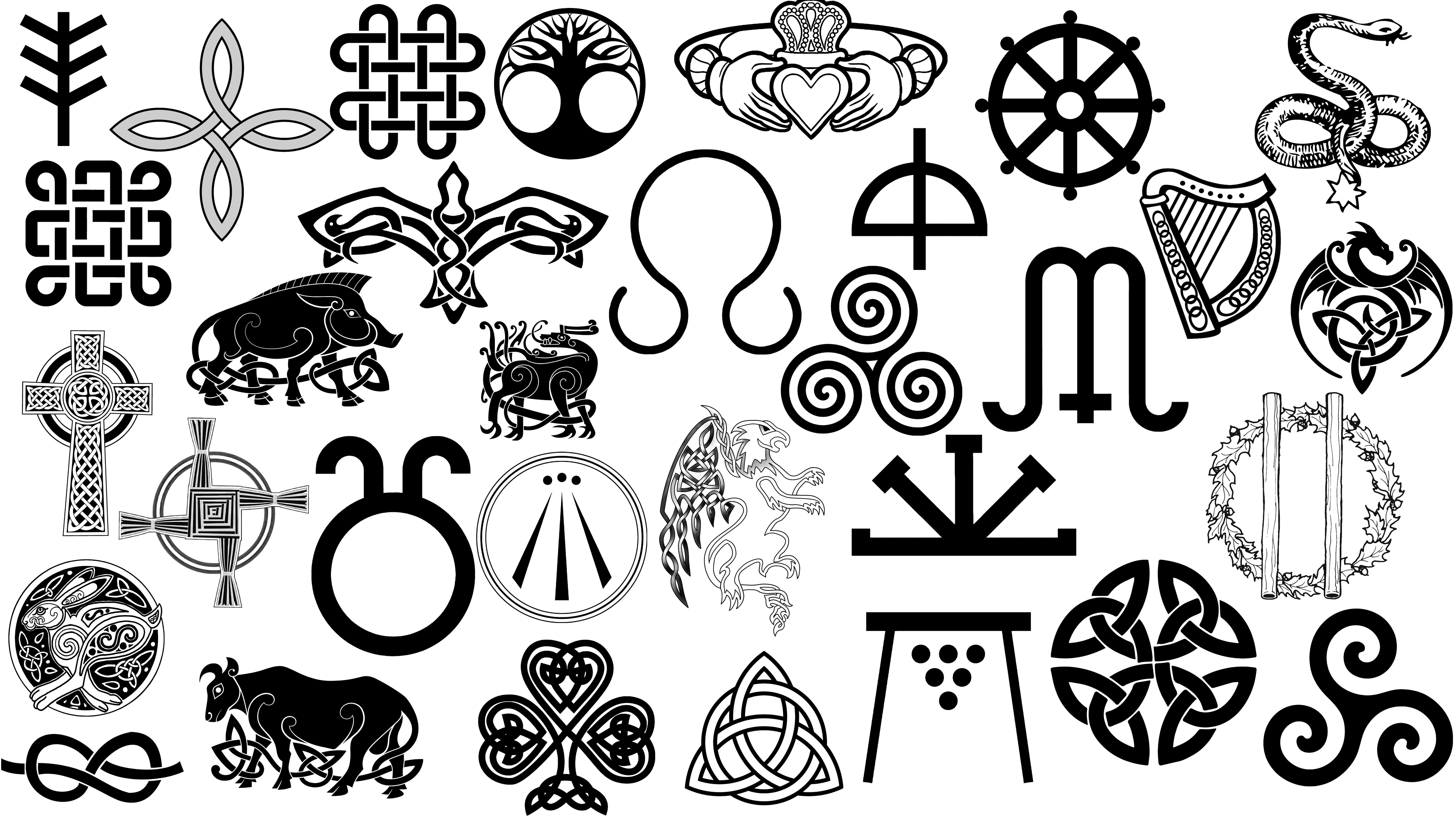Most Famous Logos in Black
Amongst different colours, black is usually associated with power, class, and sophistication. It is a universal color that can be found in various areas, including fashion and design, which often represents both authority and freedom. Black is undoubtedly the most adaptable and multi-purpose color, as it can transmit a feeling of formality and traditionalism or, on the contrary, a sense of modernity and boldness. It becomes a strong tool for the artist that helps to create the opposition, depth, and definition in the visual composition.
Black is a common colour in design because it gives the project a powerful visual effect. They can be used to anchor spaces, as a background to bring other colours to life, or as a single statement for a bold look. The fact that it is capable of absorbing light endows it with a distinctive visual weight and so it can be used for typography, borders, and other elements that require some emphasis. Its simplicity and clarity make it perfect for use in logos, corporate identity, and websites, where precision and professionalism are of critical importance.
Fashion, especially the sophisticated and everlasting one, depends on the black color for its expression. A black outfit, if worn with the right attitude, maybe an easy, cool, and sophisticated look. Its aesthetic effect is also widely celebrated, giving a slimmer look and a flattering figure. In formal wear, black is a major color that stands for formalness, respectability, and dignity. It is the ultimate chameleon, switching from day to night, casual to formal, in one single piece.
For black people culturally the meaning of the black is ambiguous but it always has a great depth and significance. It can be interpreted as grief and mourning in some cultures or it can represent freedom and independence in others. The emotion-evoking and reaction-inducing nature of the colour makes it one of the most sought-after among artists and filmmakers, who can use it to set up the tone, mood, and atmosphere. It is often employed in technology and luxury items, which implies that technology is sleek, effective, and sophisticated.
This color plays a pivotal role across different domains, offering a spectrum of meanings and uses. Its adaptability and strong visual presence make it a perennial favorite in design, fashion, and cultural expressions. Whether used for its aesthetic appeal, symbolic significance, or practical benefits, black’s enduring popularity underscores its fundamental place in our visual and cultural landscapes.
AC/DC
AC/DC emerged as an iconic Australian rock band in 1973, thanks to the Young brothers, Malcolm and Angus. The brand’s hallmark lies in electrifying performances that blend hard rock with blues and rock and roll. This fusion has made AC/DC a top-earning band globally. Their “Back in Black” album stands among the world’s best-selling records. The AC/DC logo, with its bold gothic letters and a striking lightning bolt, encapsulates the band’s dynamic and powerful sound. This symbol, charged with energy, embodies the essence of rock’s pioneering spirit. The lightning bolt does more than split the initials, it captures the essence of their sound and electrifying live shows.
Adidas
In 1949, Adolf Dassler established Adidas AG in Herzogenaurach, Germany. This multinational corporation, known for its footwear, clothing, and accessories, ranks as Europe’s largest sportswear producer and second globally, trailing only Nike. Adidas has earned acclaim for its athlete collaborations and significant soccer presence. The Adidas emblem, featuring three slanted stripes on a simple background, evokes a mountain. This design symbolizes the challenges athletes conquer, embodying adventure and resilience. These stripes, though simple, are instantly recognizable, representing the brand’s lasting impact on sports and lifestyle. The logo reflects Adidas commitment to performance, echoing its rich heritage.
Air Jordan Jumpman
Nike introduced the Air Jordan brand for NBA legend Michael Jordan in 1984. This line of shoes and athletic wear has become a global cultural phenomenon. The Jumpman logo, showcasing Jordan’s iconic silhouette, epitomizes athletic luxury and innovation. This logo portrays a basketball player soaring, ball in hand, embodying both grace and power. That player, Michael Jordan, is captured in a moment of athletic poetry. The Jumpman logo stands for excellence and the continuous quest for success. It resonates with sports enthusiasts and sneaker fans worldwide, symbolizing more than just athletic wear but a legacy of victory.
Apple
Steve Jobs, Steve Wozniak, and Ronald Wayne co-founded Apple Inc. in 1976, establishing its headquarters in Cupertino, California. This tech giant specializes in consumer electronics, software, and online services, including the iPhone and Mac computers. Known for pioneering innovations, Apple has significantly influenced the digital era. The company’s logo, an apple with a bite taken out, cleverly references the computing term “byte”. Its simple yet elegant design reflects Apple’s approach to product design: intuitive, sleek, and user-centric. This iconic bitten apple symbolizes innovation and has become a global emblem of a modern lifestyle.
Asus
Founded in 1989, AsusTek Computer Inc., or Asus, stands as a titan in the Taiwanese computer and electronics arena. The brand shines in crafting motherboards, PCs, laptops, and more, endearing itself to tech enthusiasts worldwide. Its Republic of Gamers (ROG) line has notably left a mark on the gaming sector, earning accolades from gamers everywhere. The Asus emblem, an upward-pointing arrowhead, mirrors the brand’s quest for excellence and innovation. This symbol, with its precise angles and lines, represents Asus’s commitment to precision and forward movement in technology, embodying the essence of progress in electronics.
Audi
Audi AG, rooted in history since 1910 and re-established in 1969, reigns as a pinnacle of German luxury auto manufacturing under the Volkswagen Group umbrella. Celebrated for its engineering prowess, elegant designs, and the innovative quattro system, Audi lives by its mantra, “Progress through Technology”. The brand’s insignia, four interlocked rings, commemorates the unity of Audi with DKW, Horch, and Wanderer. This minimalist yet profound symbol stands for unity, heritage, and the relentless pursuit of automotive excellence, echoing Audi’s commitment to sophistication and high-tech craftsmanship.
Aveda
Aveda Corporation, launched by Horst Rechelbacher in 1978, pioneers in the American cosmetics landscape with a deep-seated commitment to eco-friendliness and natural ingredients. From skincare to perfumes, Aveda champions sustainable sourcing and environmental responsibility, setting benchmarks for corporate ecological stewardship. Its logo features a distinctive font with a circle inside the letter “A”, representing a design harmony that reflects Aveda’s philosophy of elegance and simplicity. The logo’s minimalist flair and geometric finesse encapsulate Aveda’s focus on precision, beauty, and wellness, reflecting the brand’s ethos.
Batman
The brainchild of artist Bob Kane and writer Bill Finger, Batman emerged in DC Comics’ “Detective Comics” #27 in 1939, swiftly ascending as a venerated figure in American pop culture. Bruce Wayne, behind the Batman persona, combats Gotham City’s crime with his intellect, detective skills, and physical prowess, minus any superpowers. The Batman emblem, a bold bat silhouette with outstretched wings, stands as a symbol of protection over Gotham. Its symmetrical design and angular wings capture the vigilance and enigmatic allure of the Dark Knight, solidifying Batman’s image as an icon of justice, mystery, and the eternal struggle between good and evil.
Belkin
In 1983, Chet Pipkin founded Belkin International, Inc. in California, marking the start of an era in consumer electronics focused on connectivity devices. Belkin’s array includes everything from home networking solutions to mobile accessories and an array of cables, emphasizing innovation to enhance user connectivity. The logo of Belkin, characterized by lowercase lettering alongside a distinctive dot pattern on the left, symbolizes network connectivity and integration. This clean typography mirrors the company’s dedication to user-friendly and forward-thinking tech designs, illustrating Belkin’s pivotal role in linking users with cutting-edge technological solutions.
Black Flag
Emerging from Hermosa Beach, California, in 1976, Black Flag stood at the vanguard of the American hardcore punk scene. With Greg Ginn at the helm, the band’s sound – raw and intense – paired with socially aware lyrics, played a critical role in shaping the punk movement. Black Flag’s ethos of relentless touring and independence has solidified its legendary status within punk circles. The band’s logo, consisting of four stark vertical bars, embodies energy, rebellion, and an unwavering spirit of defiance. Its simplicity matches the band’s direct musical style, while the bars’ boldness mirrors their intense sound and lyrical directness, becoming a potent emblem of punk’s DIY culture.
BlackBerry
Founded in 1984 by Mike Lazaridis and Douglas Fregin, BlackBerry Limited (formerly Research In Motion) became a household name for its smartphones and tablets, setting the standard for secure communication and mobile productivity. Once a titan in the smartphone industry, BlackBerry has pivoted towards software and services, focusing on cybersecurity and embedded systems. The BlackBerry logo, featuring dots arranged to form a ‘B’ reminiscent of the BlackBerry fruit, serves as a metaphor for connectivity and communication, reflecting the essence of BlackBerry’s offerings. The design’s simplicity and distinctiveness echo BlackBerry’s pioneering influence on smartphone technology and secure communications.
Bose
Amar Bose established the Bose Corporation in 1964, cementing its status as a powerhouse in audio equipment. Renowned for its speakers, headphones, and sound systems, Bose’s dedication to delivering high-fidelity sound through innovation has positioned it at the audio industry’s forefront. The Bose logo, with its brand name in a bold, uppercase font, projects a sense of strength and dependability. Its minimalist and clear typographic choice highlights Bose’s commitment to sound clarity, mirroring the brand’s ethos of delivering superior sound quality without unnecessary complexity, underscoring Bose’s legacy of auditory excellence.
Chanel
Founded in 1910 by Gabrielle “Coco” Chanel, Chanel S.A. stands as a paragon of French luxury fashion, redefining women’s fashion with elegance and simplicity. The brand’s legacy includes iconic clothing, handbags, fragrances, and cosmetics, with Chanel No. 5 perfume epitomizing timeless allure since 1921. The Chanel logo, with its two interlocking ‘C’s, represents its founder’s initials, embodying elegance and simplicity at the heart of Chanel’s design philosophy. This monogram has evolved into a hallmark of luxury and sophistication in the fashion world, symbolizing grace and eternal style.
ChatGPT
ChatGPT, by OpenAI, represents a significant advancement in AI through its capacity to comprehend and emulate human-like text. Emerging as a prominent member of the GPT family, ChatGPT excels in conversation, information dissemination, and generating diverse textual content. The symbol of ChatGPT, featuring interlaced lines forming a continuous knot, signifies the blend of technology with human-centric communication. This emblem reflects the AI’s complex conversational abilities and the limitless potential of AI-generated interactions, highlighting the intricate connectivity at its core.
Coach
Established in 1941 in New York City, Coach (now Tapestry) has emerged as a luminary in luxury accessories, including handbags and ready-to-wear fashion, renowned for its exquisite leather craftsmanship. The brand’s evolution into a global fashion icon is marked by innovative design and a commitment to luxury. The Coach logo, depicting a horse and carriage, nods to its heritage in high-quality leather goods and luxury travel accessories. Combined with the bold, uppercase presentation of the brand name and its origin city, the logo projects a timeless elegance that marries tradition with modern fashion sensibilities.
Columbia
Columbia Sportswear Company, established in 1938 by Paul Lamfrom, has become a cornerstone in outdoor apparel and gear, celebrated for its pioneering technologies aimed at enhancing outdoor experiences. As a preferred brand among adventurers, Columbia’s dedication to performance, comfort, and durability is unmatched. The Columbia logo, featuring a stylized flag, encapsulates the brand’s adventurous ethos and commitment to the great outdoors. The bold, capitalized brand name reinforces Columbia’s reputation for reliability and quality in tackling the challenges of nature, embodying the essence of exploration and resilience.
Continental
Founded in 1871 in Hanover, Germany, Continental AG has become a cornerstone in the automotive parts industry, known for its specialization in brake systems, automotive safety, and tires, among other components. This German multinational company stands as a pivotal supplier in the automotive world, enhancing driving safety and vehicle efficiency with its innovative solutions. The Continental logo, marrying a clean serif font with a stylized horse, captures the essence of mobility and speed, symbolizing the company’s prowess in automotive dynamics. The horse, emblematic of power, alongside the traditional typeface, underscores Continental’s enduring legacy and innovation in the automotive sector.
Converse
Since its founding in 1908, Converse has emerged as an iconic figure in the footwear industry, celebrated for its Chuck Taylor All-Star sneakers. Beyond its athletic origins, Converse represents a culture of rebellion and individuality, a status cemented further after its acquisition by Nike in 2003. The Converse emblem, showcasing the brand name alongside a star and chevron, pays homage to its All-Star lineage while signifying progress and forward motion. This distinctive combination reflects Converse’s enduring influence on sports, fashion, and personal expression.
Dolce & Gabbana
In 1985, Domenico Dolce and Stefano Gabbana inaugurated Dolce & Gabbana in Milan, marking a new epoch in Italian luxury fashion with their innovative and iconic designs. The brand, a beacon of Italian fashion heritage, offers a luxurious array of clothing, accessories, and cosmetics that resonate globally. The Dolce & Gabbana logo, with its bold capitalized letters and artistic ampersand, mirrors the brand’s fusion of contemporary luxury with classic Italian elegance. The frequent use of “D&G” embodies a trendy, youthful appeal, illustrating the brand’s mastery in blending modernity with timeless Italian aesthetics.
Gillette
Established by King C. Gillette in 1901, Gillette has stood as a paragon of shaving and personal care, renowned for introducing the first safety razor. Now under Procter & Gamble, Gillette continues to lead in the grooming industry by prioritizing innovation and precision. The Gillette logo, characterized by its italicized typeface, embodies the essence of sharpness and accuracy, essential for a clean shave. The unique cut in the ‘G’ and ‘i’ highlights the brand’s focus on precision cutting technology, while the bold letters signify Gillette’s dominance in men’s grooming, reflecting a commitment to excellence and innovation.
Giorgio Armani
Founded in 1975 by its namesake in Milan, Italy, Giorgio Armani S.p.A. epitomizes the pinnacle of fashion and luxury. Armani is celebrated for its elegant, clean lines and refined aesthetic, spanning apparel, accessories, eyewear, cosmetics, and home decor, cultivating an aura of sophistication. Emblematic of Italian luxury and craftsmanship, the Giorgio Armani logo showcases the initials “GA” in an eagle formation, representing the brand’s dominance and excellence in fashion. Accompanied by the designer’s full name in a sophisticated serif font, the logo stands as a beacon of luxury and haute couture excellence, embodying timeless elegance.
Gucci
Since its inception in 1921 by Guccio Gucci in Florence, Italy, Gucci has ascended to the zenith of luxury fashion, celebrated for its exquisite craftsmanship and Italian heritage. Under Alessandro Michele’s creative vision, Gucci has reimagined luxury for the modern era, cementing its status as an emblem of contemporary allure. The iconic Gucci logo, with its two interlocking ‘G’s derived from the founder’s initials, emerges as a global symbol of fashion and opulence. This monogram captures the essence of Gucci’s legacy in fine leather goods, showcasing the brand’s commitment to timeless style and meticulous attention to detail.
Honda
Honda Motor Co., Ltd., established in 1948 by Soichiro Honda in Hamamatsu, Japan, has evolved into a global powerhouse in the automotive and motorcycle sectors, revered for its innovation, quality, and eco-friendly initiatives. Honda’s leadership in engine technology and robotics exemplifies its commitment to advancing mobility and manufacturing. The Honda logo, featuring a robust ‘H’, symbolizes the brand’s solid reputation in the automotive world. The logo’s design, with its extended crossbar, conveys a dynamic forward momentum, mirroring Honda’s forward-thinking approach to transportation and its aim to cater to a worldwide audience with simple, efficient products.
HP
Hewlett-Packard, known as HP, emerged from a one-car garage in Palo Alto, California, in 1939, founded by Bill Hewlett and Dave Packard. Today, HP stands as a titan in the IT industry, offering a vast array of computing and printing solutions that serve consumers, businesses, and large enterprises alike. The HP logo, a minimalist rendition of its initials in an italic typeface, exudes a sense of progress and innovation. This streamlined, contemporary design encapsulates HP’s pioneering spirit in personal computing, reflecting its commitment to developing accessible, user-centric technology. The emblem’s straightforwardness ensures wide recognizability, symbolizing HP’s dedication to innovation and quality in the tech realm.
Hublot
Founded in 1980 by Carlo Crocco, Hublot marks a significant point in Swiss luxury watchmaking, known for its pioneering use of materials and unique designs. The brand’s introduction of the first natural rubber strap set a new standard in the industry, emphasizing Hublot’s commitment to innovation—merging traditional Swiss craftsmanship with avant-garde techniques. The Hublot logo, with its distinct and bold font, captures the essence of the brand’s approach to watchmaking. The ‘H’ is particularly stylized, symbolizing Hublot’s innovative spirit. The logo’s design, clear and authoritative, embodies the fusion of tradition with modernity, reflecting Hublot’s core identity of luxury and precision in timepiece craftsmanship.
Hugo Boss
Since its establishment in 1924 by Hugo Ferdinand Boss in Metzingen, Germany, Hugo Boss AG has grown into a leading name in global fashion. Renowned for its elegant and contemporary men’s and women’s fashion, accessories, and fragrances, Hugo Boss epitomizes quality and modern classicism. The logo of Hugo Boss, with its strong sans-serif typography, projects the brand’s commitment to modernity and high-end fashion. The bold, uppercase letters convey a sense of confidence and sophistication, aligning with the brand’s reputation for crafting stylish, high-quality lifestyle products.
iOS
Launched in 2007 by Apple Inc., iOS has become the backbone for devices like the iPhone, iPad, and iPod Touch, known for its user-friendly interface and secure environment. iOS supports essential services such as the App Store, enhancing Apple’s ecosystem with its focus on privacy, efficiency, and seamless integration. The iOS logo, featuring the sleek design of the “iOS” wordmark, mirrors the operating system’s simplicity and advanced functionality. The clean, modern typography of the logo underscores Apple’s dedication to minimalist design and the efficient, user-centric functionality of its software offerings, encapsulating the essence of Apple’s software philosophy.
James Bond
Ian Fleming’s creation, James Bond, known by his code number, 007, debuted in 1953 and quickly became a defining figure in the spy genre. Celebrated for his elegance, high-tech gadgets, and espionage savvy, Bond’s adventures have been immortalized in one of cinema’s most enduring and financially successful franchises. As a symbol of cold war espionage, Bond has evolved, maintaining a significant impact on both literature and cinema. The iconic 007 logo, with its angular, modernized seven, infuses the emblem with a sense of precision and a contemporary edge. The integration of a gun barrel into the seven retains the classic espionage motif, modernized for a new era. Bold and stark, the logo encapsulates the enduring allure of the world’s most famous spy, combining timeless elegance with a forward-looking design.
Logitech
Founded in 1981 in Apples, Switzerland, by Daniel Borel and Pierluigi Zappacosta, Logitech has grown into a leader in PC and mobile accessories. The company is renowned for its innovative products like mice, keyboards, and webcams, which enhance digital experiences. The Logitech logo features the brand name in a bold, sans-serif font, where letter like ‘g’ show unique stylistic curves, adding elegance. This design, blending simplicity with clever shape interplay, reflects Logitech’s modern, technology-focused identity.
Louis Vuitton
Established in 1854 in Paris by its namesake, Louis Vuitton, this luxury brand has set the standard for high-end leather goods, particularly luggage and handbags, adorned with its iconic LV monogram. Louis Vuitton epitomizes French luxury, marrying traditional craftsmanship with innovation. The Louis Vuitton logo features the interlocking ‘L’ and ‘V’ monogram, with the ‘L’ in a bold serif and the ‘V’ overlaying it in a thinner serif, illustrating the brand’s elegant interconnectivity. Below, the brand name is spelled in a more understated sans-serif font, balancing the emblem’s timeless elegance and simplicity against a stark background.
MAC
Make-up Art Cosmetics, or MAC, was founded in Toronto in 1984 by Frank Toskan and Frank Angelo. The brand, recognized for its extensive color range suitable for all skin tones, has become synonymous with professional-quality makeup. MAC’s collaborations across fashion, art, and pop culture underscore its commitment to creativity and self-expression. The MAC logo, with its interconnected letters and distinctive design features like the two dots over the ‘A’, captures the brand’s modern and edgy presence in the beauty industry. Its sharp lines and minimalistic style reflect MAC’s emphasis on precision, quality, and innovative design in cosmetics.
Martin Garrix
Martijn Gerard Garritsen, better known as Martin Garrix, born on May 14, 1996, in Amstelveen, Netherlands, has become a pivotal figure in electronic dance music (EDM). His breakout hit “Animals” in 2013 marked him as one of the youngest DJs to gain international acclaim. Renowned for his dynamic performances and innovative tracks, Garrix has played a significant role in shaping the EDM landscape, asserting his position as a modern electronic music luminary. The symbolic imagery often associated with Garrix, such as a black cross and ‘X’, embodies the concepts of duality – positive and negative, correct and incorrect – with their straightforward design and universal comprehension, signifying choice and health in various contexts.
MINI
The British automotive brand MINI, established in 1969, revolutionized the compact car segment with its iconic small cars. Now under BMW‘s stewardship since 2000, MINI marries quintessential British design with German precision, continuing to enchant with its unique blend of personality, enjoyable driving experiences, and space efficiency. The MINI emblem, with the brand’s name in all caps ensconced within a circle and bracketed by wing-like elements, evokes a sense of speed and liberation, paying homage to the brand’s roots. Its contemporary and streamlined design mirrors MINI’s ethos of crafting nimble, heritage-rich vehicles for today’s roads.
Miu Miu
Miu Miu, the brainchild of Miuccia Prada launched in 1993, stands as the experimental sibling to the esteemed Prada brand, named after Miuccia Prada’s nickname. Celebrated for its avant-garde and provocative designs, Miu Miu captures a youthful and rebellious essence, blending high fashion with contemporary culture. Its logo, featuring the brand name in mirrored, bold sans-serif letters with distinctive cutouts, radiates modernity, elegance, and a playful deviation from conventional luxury branding, making Miu Miu a beacon for those who lead the trends.
New York Times
Since its inception in 1851 by Henry Jarvis Raymond and George Jones, The New York Times has stood as a bastion of journalism, renowned for its comprehensive coverage, investigative reporting, and influential opinion pieces. A multiple Pulitzer Prize winner, The Times has adapted to the digital era, extending its reach through online platforms while continuing to shape public dialogue. Its logo, characterized by an ornate blackletter typeface, nods to the venerable newspaper mastheads of yore, projecting the publication’s rich heritage and authoritative voice in journalism, emblematic of its established role in the media landscape.
Nike
Nike, Inc. sprang to life in 1964 as Blue Ribbon Sports by founders Bill Bowerman and Phil Knight, and by 1971 it had transformed into Nike, echoing the Greek goddess of victory. As the leading global behemoth in athletic footwear, apparel, and sports gear, Nike’s legacy is marked by its groundbreaking “Just Do It” mantra and the iconic Swoosh emblem, standing at the forefront of sports marketing evolution and significantly influencing worldwide sports culture. The Swoosh logo, emblematic of movement, speed, and the goddess Nike’s wing, paired with the brand’s name in assertive, uppercase typography, encapsulates the spirit of athletic excellence and achievement.
Nissan
Originating in 1933, Nissan Motor Co., Ltd. has established itself as a powerhouse in the automotive domain, hailing from Yokohama, Japan. Nissan is hailed for its forward-thinking in design, technology, and a steadfast commitment to sustainability, notably with the Leaf, a leader among electric vehicles. The brand offers a diverse portfolio, including electric vehicles, sports cars, SUVs, and trucks, serving a wide range of consumer needs. Its logo, featuring the company’s name encased in a sleek, black circle in a modern, bold, sans-serif font, projects Nissan’s image as a contemporary and dependable force within the automotive industry.
PlayStation
Introduced in December 1994 by Sony Interactive Entertainment, the PlayStation brand revolutionized the gaming landscape as the first console to surpass 100 million units sold globally. With its advanced hardware and extensive game library, PlayStation has continually set the standard in the gaming world, evolving through multiple console generations, including the PlayStation 5. The brand is synonymous with cutting-edge gaming technology and immersive entertainment. Its emblem, comprising distinct geometric shapes that form the recognizable PlayStation symbols, exudes innovation and entertainment, reflecting the brand’s pioneering role in gaming technology and experiences.
Puma
In 1948, Puma SE was born in Herzogenaurach, Germany, under the guidance of Rudolf Dassler, marking the inception of a leading sportswear brand. Emerging from a split with his brother Adolf, founder of Adidas, Puma has etched its mark in sports history through technological innovations and partnerships with celebrated athletes. Puma marries performance with fashion, impacting both athletic and lifestyle sectors. The brand’s logo, depicting the namesake puma in a dynamic leap, alongside the brand name in strong, uppercase lettering, symbolizes agility, speed, and the fusion of athletic performance with steadfast resilience.
Reebok
Founded in 1958 in Bolton, England, by Joe and Jeff Foster, Reebok International Limited emerged as a notable British-American entity in the footwear and apparel market, inspired by the Afrikaans for “rhebok”, a type of African antelope. Initially famed for its running shoes with spikes, Reebok evolved under Adidas’s ownership since 2005 into a key figure in fitness and lifestyle, renowned for its innovative designs and collaborations with prominent athletes and cultural figures. The logo, marked by a delta symbol divided into three segments representing change, challenge, and progress, coupled with the brand’s name in bold, italicized capitals, encapsulates the spirit of movement and athletic ambition.
Roblox
Roblox, managed by Roblox Corporation and initiated in 2006 by David Baszucki and Erik Cassel, transcends traditional gaming as an expansive online platform that enables users to craft, share, and commercialize their own games – or “experiences”. It has garnered a vast user base, particularly among the younger demographic, with its immersive multiplayer platform across diverse genres. The Roblox logo, designed to reflect the essence of creativity and construction inherent to the platform, features bold, blocky typography with a distinct, playful twist on the ‘O’, symbolizing the platform’s core of building and imaginative play.
Rode
Since its inception in 1967 by Peter Freedman, Rode Microphones, based in Australia, has distinguished itself in the professional audio sphere with its premium studio and live sound microphones. Rode’s commitment to innovation and quality has made it indispensable to filmmakers, musicians, and content creators globally, championed for its durable, high-performing audio solutions. The brand’s logo, characterized by bold, uppercase letters and an emblematic ‘Ø’ with a diagonal line exceeding its contour, offers a modern flair to the classic type, embodying Rode’s forward-thinking approach to audio technology.
Sony
Sony Corporation, established in Tokyo, Japan, in 1946 by Masaru Ibuka and Akio Morita, operates as a diverse multinational conglomerate with significant influences in electronics, gaming, entertainment, and financial services. Sony’s legacy of innovation is evident in its array of groundbreaking consumer electronics, from the PlayStation to the Walkman and BRAVIA TVs, continually redefining the intersections of technology, entertainment, and design. The Sony logo, with its company name in a robust, minimalist block font, mirrors the brand’s commanding presence and enduring impact within the tech and entertainment landscapes. The logo’s simplicity and boldness echo Sony’s commitment to elegance, quality, and pioneering ingenuity in the digital age.
Tecate
Founded in 1944 in Tecate, Baja California, Tecate has risen as a beloved Mexican beer brand, cherished for its crisp and refreshing taste. Owned by Heineken International, Tecate stands as a testament to traditional Mexican brewing artistry, capturing the essence of Mexican culture while reaching beer aficionados worldwide. The brand’s emblem, featuring a majestic black eagle with outspread wings, symbolizes strength and freedom. This eagle, clutching a ‘T’ emblem, underscores the brand’s robust character and its name’s initial. Below this potent symbol, “TECATE” is presented in bold, uppercase letters, asserting its presence with simplicity and authority.
Ubisoft
Ubisoft Entertainment SA, established in 1986 by the Guillemot family in Montreuil, France, ranks among the world’s premier video game publishers. Renowned for iconic series such as Assassin’s Creed, Far Cry, Just Dance, and the Tom Clancy saga, Ubisoft’s commitment to innovation and immersive storytelling places it at the pinnacle of the gaming industry. Its logo, characterized by an abstract swirl, embodies the brand’s dynamic and creative spirit. This swirling motif, coupled with “UBISOFT” in a straightforward, all-caps font, reflects the company’s ethos of continuous movement and groundbreaking endeavors in the digital entertainment landscape.
Under Armour
Launched in 1996 by ex-University of Maryland football player Kevin Plank, Under Armour, Inc. specializes in high-performance sports apparel, shoes, and accessories, pioneering fabrics and designs that keep athletes cool, dry, and light. The brand has surged in popularity, driven by its commitment to innovation and enhancing athletic performance. Its logo, featuring two ‘U’ forms intersecting to create an ‘X’ in the negative space, captures the essence of endurance and performance that the brand promotes. Accompanied by “UNDER ARMOUR” in bold, straightforward typography, the logo communicates the brand’s dedication to reliability and superior performance gear.
USB
The Universal Serial Bus (USB), conceptualized in the mid-1990s by a consortium including Intel, has become indispensable for digital data communications across devices. Serving as the cornerstone for a multitude of device connections and communications, USB’s evolution has significantly boosted data transfer speeds and power delivery, cementing its status in the digital ecosystem. The USB logo, with its iconic symbol featuring a circle, an arrow, and angular lines, illustrates the essence of connectivity and data movement. This schematic design, integrating a port circle and an arrow for data transfer, visually encapsulates the technology’s fundamental role in modern digital connectivity.
Vertu
Founded in 1998 as a boutique division of Nokia, Vertu, the British luxury mobile phone manufacturer, distinguishes itself through unparalleled craftsmanship and the use of precious materials, alongside exclusive services like a personal concierge. Having evolved beyond its Nokia origins, Vertu embodies a realm where technology meets artisanal luxury, catering to those who cherish both cutting-edge tech and bespoke craftsmanship. Its logo, with a stylized ‘V’ adorned with upward-extending wings, encapsulates the brand’s aura of luxury and exclusivity. Below, “VERTU” is inscribed in a modern, sans-serif typeface, underscoring the brand’s blend of contemporary elegance and simplicity.
Volvo
Since its inception in 1927 and the debut of the Volvo ÖV 4 in Gothenburg, Sweden, Volvo has stood as a paragon of automotive safety and innovation, pioneering features like the three-point seatbelt. Now under Geely’s ownership, Volvo continues to prioritize the production of safe and environmentally considerate vehicles. Its emblem, characterized by a metallic-gradient circled arrow pointing upwards and right-an homage to Volvo’s Swedish iron heritage—alongside the “VOLVO” name in a robust, sans-serif font, conveys the brand’s commitment to strength, reliability, and its rich legacy in the automotive sector.
X Corp
Originally Twitter, Inc., X Corp has risen as a global nexus for communication, offering a platform for users to share, engage, and stay informed through “tweets”. Since its foundation in 2006 by Jack Dorsey and others, it has significantly influenced media, politics, and social dialogue, serving as a pivotal real-time information and discussion hub. Its logo, featuring two bold, intersecting black lines to form an abstract ‘X’, mirrors the brand’s innovative and forward-looking ethos. This minimalist, striking design stands as a symbol of the platform’s dynamism, precision, and role as a leader in digital communication.
Zara
Launched in 1975 by Amancio Ortega and Rosalía Mera, Zara, the cornerstone of the Inditex group, has redefined the fashion landscape with its fast-fashion model, efficiently translating design concepts to its global storefronts. Renowned for its ability to swiftly respond to the ever-evolving fashion trends, Zara appeals to a broad customer base seeking affordability without compromising on style. Its logo features tightly knit, overlapping letters with sharp edges, projecting a modern, chic image. The Zara logo showcases bold, overlapping letters with avant-garde flair. Serifs on ‘Z’ and ‘A’ elongate, gracefully underscoring the text. The sleek black enhances its chic modernity.
